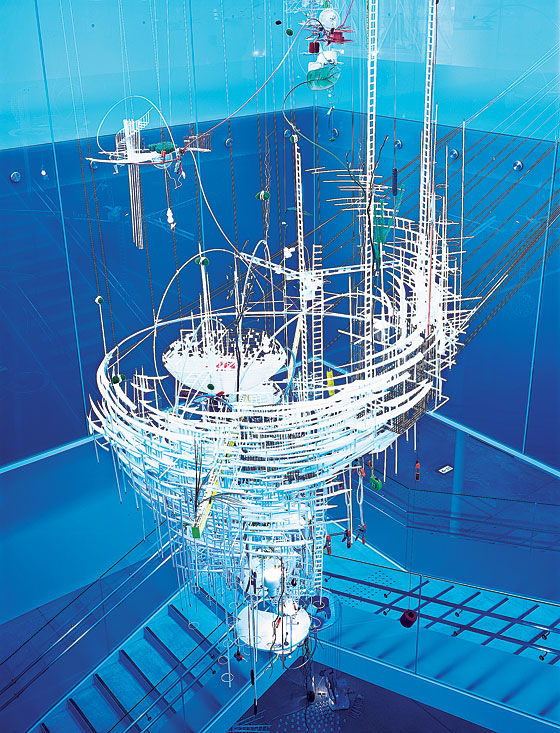
Sarah Sze’s striking, delicate site-specific constructions aren’t exactly the easiest things to collect, transport, or install. Often gallery-size and made from everyday bric-a-brac such as ladders, lamps, fans, Q-tips, string, toothpicks, paper, rocks, cots, cans, and plastic bottles, the neo-Escher-like structures seem like they might collapse if you so much as breathe on them wrong. With works like The Art of Losing (2004)—an epic cyclonic mobile of sorts owned by the 21st Century Museum of Contemporary Art in Kanazawa, Japan—impractical for most collectors to display and therefore own, her prices have never made headlines, her presence at auction is negligible, and the pieces themselves are typically seen in and acquired by museums.
But at 43, she’s (somewhat suddenly) a star, thanks to the rigor and consistency of her vision, and institutional support for obsessive, pointedly ephemeral work that defies commodification in an art market always hungry to buy. Sze has works in the collections of the MoMA, the Guggenheim, and the Whitney, as well as a MacArthur “genius” grant (her husband, doctor and author Siddhartha Mukherjee, has a Pulitzer), and in February, she was invited to represent the U.S. at the 2013 Venice Biennale—an art-world designation on par with an Oscar.